Transgender – What is it? What does it mean?
Transgender or sometimes a short form trans is a term that refers to people whose gender identity does not correspond to the sex they were assigned at birth. Transgender is an adjective and should never be used as a noun to describe a transgender individual.
Transgender is an umbrella term that encompasses all people whose gender identity is different from their sex assigned at birth. If a person is assigned female at birth but has a male gender identity they are likely a transgender man. If a person is assigned a male at birth but has a female gender identity then they are a transgender woman.
Table of Content
Terminology
According to Merriam-Webster Dictionary, the definition of a transgender person is of, relating to, or being persons with an identity that differs from the sex they were assigned at birth. Transgender identities vary, and it is important not to use the outdated term “transsexual people” when referring to a person’s gender identity.
The term transgender is often used to describe a person whose gender identity does not correspond with their assigned at birth sex. Not all transgender people may describe their transgender identity the same way. Transgender identities have gender diversity and tremendously differ for each individual. One’s gender identity is their matter. Transgender does not equal a gender identity disorder but many transgender folks deal with gender dysphoria on a regular basis.
The transgender community may include an umbrella of transgender identities that are different from the sex they were assigned at birth. This means if a boy was born with male genitalia – he is assigned male. If a girl is born with female genitalia – she is assigned, female. Essentially, health care providers decide one’s gender identity at the moment the person enters this world.
Cisgender means that a person’s gender identity matches the sex assigned at birth. Transgender people are born with a biological sex that does not correspond to their gender. That means a trans woman was thought to have been born male, and a transgender man was thought to have been born female.
The transgender umbrella term includes many gender identities. The word transgender means different things to different people, so never jump to conclusions about someone who may identify as a trans person. It is always best to ask the person the gender identity of whom you are unsure about the wording, labels, and pronouns they prefer to use. Most cisgender people do not focus on gender identities since it corresponds to the sex they were assigned at birth.
Transgender people can and usually do express their gender identities in a variety of ways to reflect gender diversity. It is not a one size fits all thing based on physical sex characteristics. For some, it may revolve around the person’s internal sense to present themselves to the public as their internal gender dictates.
These physical characteristics may include dressing, putting on makeup, and behaving in a manner that feels authentic to them. Other transgender people reject assigned sex by having medical procedures, gender reassignment surgery, and changes to their bodies to project their gender expressions.
The short form of transgender is trans. The term is often used by the transgender population instead of the long-form. Cisgender is also often shortened to cis, so you may find a cis man or cis woman in some guides on transgender issues.
There are many terms out there, but transgender is usually the one used the most by those in the transgender community There is also an outdated term transsexual, we prefer not to use it, as some may find it quite offensive. But, there are people that continue to identify with transsexuals, especially in languages other than English. So, it is a matter of personal preference, cultural perception as well as knowledge.
So, it is crucial to remember that transgender is an umbrella term for folks whose gender identity differs from the assigned sex at birth. The transgender community includes many people from all walks of life. Gender identity refers to the internal sense of who you are whereas gender expression refers to how a person presents themselves to the public.
Binary Trans Men and Women
Transgender or trans are often used in front of the words male and female to refer to transgender people. These are good terms to use as adjectives but they are not always the best way to address transgender people.
There are some folks in the transgender community that prefer to only use man or woman as their gender. It is important to always as how transgender people identify and whether they are okay with the term transgender. Many transgender people seek to avoid the word transgender altogether and only use the two binary genders to refer to their gender identities. Some individuals may feel the word comes off as offensive to those who are gender fluid, non-binary or non-conforming.
Transgender women are women who were not assigned female at birth, most commonly referring to women who were assigned male at birth or AMAB. Transgender females may also identify as transfeminine, though not all transfeminine individuals are trans women. They may or may not be diagnosed with gender dysphoria.
Transgender men are men who were not assigned men at birth, most commonly referring to men who were assigned female at birth or AFAB. Transgender men may also identify as transmasculine, though not all transmasculine individuals are transgender men. They may or may not have a gender identity disorder which is now known as gender dysphoria.
It is important to remember that not all transgender people like to use the word transgender ahead of women or men. Some are gender non-conforming people in addition to their transgender identity. They tend to use an umbrella term for gender nonconformity. Words like gender-neutral, genderqueer, genderfluid, or else to refer to their gender identity.
Some non-binary people are not transgender, and transgender people may identify as non-binary. Transgender identities may be presented in a variety of different ways by people whose gender identity does not match their assigned sex.
History
Transgender individuals have always been a part of many cultures and societies throughout the world. The terminology may be different, but individuals whose gender identity does not match their gender assigned at birth have existed as long as people have been on planet Earth.
Ancient Times
Sumerian and Akkadian texts from 4500 years ago list transgender or transvestite priests known as gala.
A grave of a transgender person was also discovered dating the same period of time.
In Ancient Greece as well as Rome there were priests and scholars who were transgender females. The Roman Emperor Elagabalus preferred to be called a lady rather than a lord. Elagabalus is considered to be one of the first well-documented transgender identities in history.
There were also Hijras, transgender women who were often thought of as divine beings in India.
American Indigenous cultures always had social and ceremonial roles for third gender or transgender people. These transgender people often have a Two-Spirit gender identity.
Middle Ages
In the Middle Ages, there are many accounts in Europe that document the existence of transgender men and people dealing with gender dysphoria. A famous case of Eleanor Rykener who was assigned male at birth but lived her life as a woman. Rykener was arrested in 1394 for sex work as a woman. She was a transgender woman.
In the Balkans, there is also the history of transgender people. There is a tradition of female-assigned people taking on the role of men in society. They are called sworn virgins.
In colonial America, Thomas Halle adopted clothing and roles of both females and males. In the 1800s some transgender people began their new lives in the military. Among them were Albert Cashier, James Barry, Joseph Lobdell.
In Japan, accounts of transgender people go back to the Edo period. In 1895, transgender autobiographer Jennie June and others organized the Cercle Hermaphroditos.
20th Century
A musician by the name of Billy Tipton was a famous transgender male. There were many high-profile female-to-male sex reassignment surgeries in the early and mid-1900s.
The oldest Western institute studying gender identity and transgender health was founded in Germany in 1919. In 1930 and 1931, Dora Richter and Lili Elbe had early male-to-female reassignment surgeries. Magnus Hirschfeld, a German doctor is considered a pioneer in the study of gender dysphoria as well as transgender health overall.
In 1952, American transgender woman Christine Jorgensen underwent medical treatment in the form of sex reassignment surgery. Her very public transition raised and brought awareness to transgender people in society.
The grassroots fight for transgender community rights became more publicly visible with trans gender identities fighting back against police in the 1959 Cooper Donuts Riot, the 1966 Compton’s Cafeteria Riot, and the multi-day Stonewall Riots of 1969. The Stonewall uprising was in fact started by a transgender woman.
In the 1970s, Lou Sullivan pioneered visibility for transgender community. Sullivan brought visibility to the transgender movement and founded an organization that became FTM International. During the decade, feminists advocating for women’s rights sometimes denied the inclusion of trans women, creating what was later known as trans-exclusionary radical feminism.
In Iran in 1963, Ayatollah Ruhollah Khomeini wrote that sexual correction surgery for intersex people was not against Islamic law, and therefore encouraged trans woman Maryam Khatoon Molkara to present as herself. In 1985, trans woman Maryam Khatoon Molkara personally convinced Ahmad Khomeini to decree transition and sex reassignment surgery to be allowed in Islamic law. Molkara was able to live as herself and advocated for transgender rights until her death in 2012.
Present Day
The word transgender as a term was coined in 1965. It was one of the ways to categorize those whose gender identity and assigned gender do not match.
Today, there are many organizations fighting for transgender rights and equality. However, issues like transphobia and discrimination still exist in societies around the globe. One of the major issues is the military ban on transgender people imposed by former US President Donald Trump. Another huge issue for transgender people in America and around the world is the ability to use a gender-neutral bathroom.
Despite the fact that transgender people are now more visible in popular culture, art, and media. Hundreds of trans women and men continue to die because of violence and aggression towards transgender folks. Every year the world marks Trans Day of Remembrance and celebrates Transgender Awareness Week but it is not enough to eliminate the stigma that exists.
Flag and Symbols
The transgender flag was designed by trans woman Monica Helms in 1999. The flag first debuted at a pride parade in Phoenix, Arizona in the United States in 2000.
The world-famous five stripe flag features blue which traditionally represents baby boys, pink which mostly stands for baby girls, and white which represents people who are intersex, non-binary or in transition.
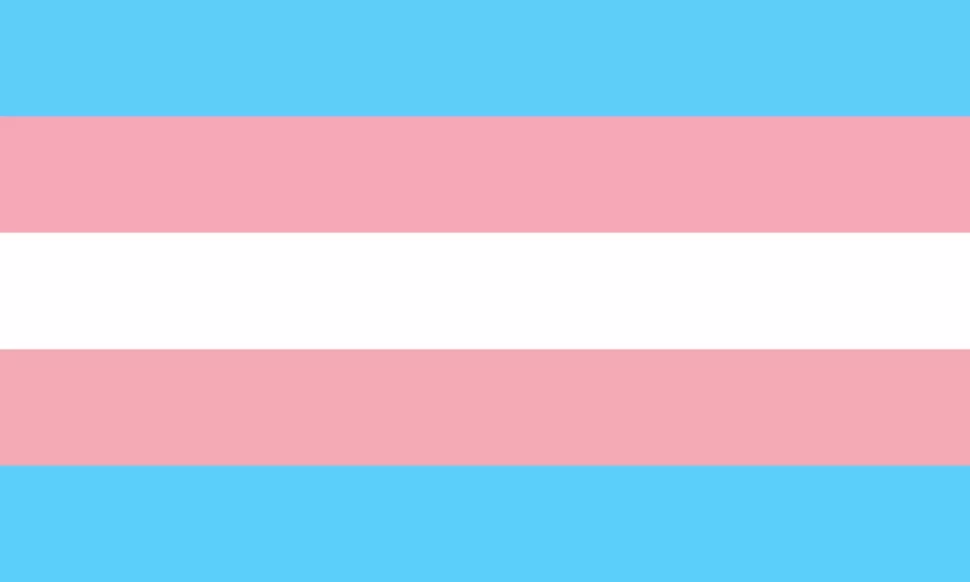 Transgender flag
Transgender flag
There are many variants of the transgender flag available online. That said, the original flag remains the most commonly used.
Among the many symbols for transgender people is the original and most popular transgender symbol which is a mix of the female Venus symbol, the male Mars symbol, and the two symbols mixed which is the androgyne symbol. It was designed and created by Holly Boswell, Wendy Parker, and Nancy R. Nangeroni in the early 1990s.
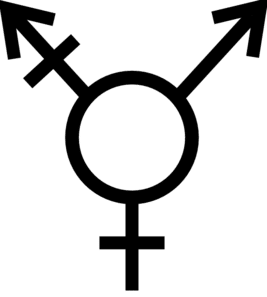 Transgender symbol
Transgender symbol
A few common variations of the transgender flag can be viewed in the gallery below.
Pronouns
When writing about trans individuals, the word “trans” should be used as an adjective. One should not write “transman” or “trans-man”, but should rather write “trans man”, where trans is used as an adjective to describe a category of men in this case.
Every individual is unique. So it is important to share your pronouns in conversation as well as ask the person about the pronouns they prefer using. Some non-English speakers may have their own versions of pronouns, there are languages where gender-neutral pronouns are fairly new and uncommon. Always be respectful of pronouns. Never assume someone’s gender identity based on their gender expression.
Common pronouns that transgender people tend to use in communication are:
- she/her/hers
- he/him/his
- they/them/theirs
- ze/hir/hirs
- ze/zir/zirs
- xe/xim/xem
- ee/em/eir
- ve/ver/vis
- tey/ter/tem
It is wise to note that some transgender people reject the use of pronouns altogether. They may prefer to use their name in communication. An important note, never deadname someone and use the name they use to identify themselves!
Differences
Transgender is generally considered an umbrella term. There are other terms that people may choose to identify themselves as.
Transgender vs Transsexual
Transsexual is an older term originating in the medical and psychological communities. It was previously used interchangeably with transgender and is still used by some older transgender individuals.
Today, the word transsexual or transsex can also be used as a term to refer to individuals who have changed or seek to change their bodies through medical routes, such as hormonal replacement therapy and/or physical surgeries.
That said, most people prefer the word transgender, as it is less medicalized and is more inclusive of individuals who have not, cannot, or do not want to medically transition.
Transgender vs Transvestite
Transvestite is considered an unpopular word to refer to transgender people. The term has fallen out of favor because “transvestism” was seen as a medical disorder. Today, crossdresser is a much more accepted word. A cross-dresser, or transvestite, is a person who dresses in and acts in the style of the gender opposite to the one they were assigned at birth. Drag is historically based on cross-dressing. Anyone can perform in drag, regardless of gender identity.
Transgender vs Intersex
Historically there has been some confusion with the terms intersex and transgender. Those who identify as transgender typically have either male or female anatomy at birth but feel they were born in the wrong body. For instance, people who are transgender males were assigned female at birth, and those who are trans females were assigned male at birth. They may seek gender reassignment surgery, hormonal and cosmetic treatment to align their gender identity with their gender expression.
Intersex individuals were born with anatomy that is not typically female or male. Intersex people have conditions that only medical professionals notice. In contrast, trans folks feel it on the inside and understand the difference without doctors or parents telling them otherwise.
The reason so many people confuse the two may lie in the fact that both transgender and intersex folks would like to choose their own gender. Also, some intersex individuals do change their gender in their lifetime and require hormonal and other treatments to do so. In some cases, intersex people may also identify as trans.
Despite some similarities, intersex and transgender should not and cannot be thought of as one. The majority of intersex individuals either identify as intersex or male/female they seldom identify as transgender. Therefore intersex and transgender folks experience a different set of medical and societal issues and problems.
It’s also important to remember and address the differences between these two groups because they face many similar struggles like stigma, misunderstanding as well as discrimination.
People who identify as transgender or transsexual also face discrimination and deserve equality. We also believe that people with intersex conditions and folks who identify as transgender or transsexual can and should continue to work together on human rights issues; however, there are important differences to keep in mind so that both groups can work toward a better future.
Transgender vs Non-binary
As mentioned above, most transgender individuals are either male or female. This also includes transgender people who most of the time identify as one of the two binary genders. Some transgender people do not identify as a man or a woman. Non-binary is often used as an umbrella term for those who may combine both genders, be fluid, shift from time to time or simply not correspond to either definition.
Non-binary is one of the most common ways to describe people whose gender is not stereotypically male or female. Gender nonconforming people do not conform to gender stereotypes in our society.
They tend to break and bend the rules on what is considered to be “feminine” and “masculine” especially when it comes to assigned sex. The things that are typically associated with the gender binary. Some transgender people may be non-binary and gender non-conforming. They may have a gender expression that is not stereotypically female or male.
Transgender vs Cisgender
Prefix or adjective that means not trans. Cisgender people identify more or less with the gender assigned to them at birth. In discussions regarding trans issues, one would differentiate between women who are trans and women who aren’t by saying, trans women and cis women. Cis is not an insult, but a neutral descriptor – much like heterosexual is to homosexual.
What is the Meaning of Passing?
Passing stands for the personal experience of a transgender individual as seen by others. Basically, a trans woman who is in a women’s dressing room or bathroom is seen as her authentic female self by other women.
Not all transgender people feel positive about passing. Although it may be important to some, others believe the word implies that they are not real to themselves if they do not pass by someone else’s standards.
Many transgender people are proud to be trans and do not want to pass for a cisgender person. They may even find it offensive.
Transgender Transition
People choose to go through a transition in different ways. Some transgender persons feel the need to go through hormone replacement therapy and surgery, others do not.
Even though transition can save lives, it is not cheap, and medical care is often unavailable to transgender people to go through a full transition.
Depending on the person transitioning can include social and medical aspects. The latter procedures may include:
- Hormone Replacement Therapy
- Hair removal treatments
- Hair growth treatments
- Cosmetic surgery, Botox injections, breast reduction or augmentation
Social transitioning is usually the first step for many transgender people. It includes:
- Coming out to family and friends
- Changing pronouns
- Using a new name
- Dressing to match gender identity
Some transgender people may also want to legally change gender in identity documents. For many, legal gender confirmation is an important step in their journey. Having identity paperwork that matches people’s identities will help them get a job, open a bank account, and travel without the fear of being humiliated or harassed. Some of the documents that may have to be changed include:
- Passport and driver’s license
- Bank account information and credit cards
- Medical and school records
- Insurance policies
- Birth and citizenship certificate
Unfortunately, not all transgender people can change their documents at the present moment. In many places, there is a gender reassignment surgery requirement to go through a legal name change.
How Does Transitioning Happen?
Now that we know what it is, let’s look into how other women and men actually go through it. The steps can be medical or social or both at the same time for transgender people.
Social Steps:
- Coming out
- Using pronouns to describe people and themselves, usually reflective of a person or gender-neutral pronouns
- Using a name that is not the one in the birth certificate, but a person can choose to keep their name
- Dressing in clothing that is typically associated with what a person identifies as
Medical Steps:
This option varies for different people. Some trans and non-binary persons may choose to have top and bottom surgery to change their biological sex characteristics, others one or the other.
- Hormone therapy to change the voice, increase or decrease facial hair, shift fat or muscle mass
- Breast removal or augmentation surgery
- Penis or vagina creation surgery
- Removal of the female or male reproductive system
Transitioning is a very difficult process that needs to take place under medical supervision. It is important to highlight the fact that trans people need great medical and social care while confirming their gender identity. Finding the right professional will help the transitioning process go smoothly.
How to Know If You’re Transgender?
That is a question that is a very personal experience for people. Some know from an early age, saying they just knew. Other people lived for decades knowing something was “off” but could not pinpoint it until they realized they were transgender.
If you are wondering about your identity, search for resources and help available in your local area and online. Give transgender dating a try to connect with trans folks in hopes of learning more about being transgender.
Gender identity can be a complicated matter especially if a person is trying to suppress it. For many transgender people coming to terms with their identity takes time. There is a lot of stigma in society associated with transgender people. Coming out may also be a difficult experience wrapped up in fear. So, for many transgender people knowing they are trans may come as a realization, but they may push their authentic thoughts aside for the sake of protecting their lives.
How To Come Out As Trans?
Coming out can be a daunting experience for transgender people whether they were assigned male or female gender at birth. Many transgender people doubt their identity at first and question their sexual orientation.
For example, some may choose to express their secondary sex characteristics slowly or step outside the gender binary. Some transgender people live as gay, lesbian, queer prior to accepting themselves as transgender.
If you are starting to feel like you might be a transgender person, your gender identity and sexual orientation do not depend on each other. There are plenty of gay trans persons, just as many straight ones. Most people do not have a strong desire to wear their sexuality on their sleeve.
Accepting the fact that you are trans has to come from within you, not others telling you that. Also please remember that gender identity and sexual orientation are two different things. A person’s sexual orientation does not depend on their gender. There is no right or wrong way to be a transgender person or to come out as one. Countless people have questioned their gender, identity, and sexuality. You are not alone in this.
If you are asking yourself questions about being trans, feeling uneasy when people refer to you as the gender given at birth, experiencing gender dysphoria, then your feelings are valid. If you feel like a transgender man or woman, you have the right to feel the way you do. Nobody can tell you otherwise.
Being a transgender person offers the opportunity to explore all aspects of identity, connect with yourself on many levels, see the world in a deeper, more meaningful way when it comes to your body and soul.
There is no single rule that can apply to everyone’s gender identity, but here are a few things that can help you come out to your friends and relatives. For young people, a great way to feel like you are not alone in this and find more support is by joining LGBTQ+ student groups.
- Think about whom you want to come out to at first
- Write your thoughts down on paper or email
- Know the facts, in case someone questions you, be firm in your stance
- Do not make assumptions, some people may react with a positive outlook, others may have a more negative reaction
- Be prepared to face negativity
Always be safe about coming out, avoid approaching someone in their time of stress or personal struggles. If you want to talk as well as come out as a transgender person, please have a great support system in place to build your confidence up and not put your health and safety in question.
Many therapists will tell you that it is not a mental illness, and neither is gender dysphoria. Yes, statistics show that LGBTQ+ people tend to struggle with depression, anxiety, and suicidality, but being yourself is not a mental health condition.
The American Psychiatric Association, states that gender identity isn’t inherently linked to other mental health problems: “For these individuals, the significant problem is finding affordable resources, such as counseling, hormone therapy, medical procedures, and the social support necessary to freely express their gender identity and minimize discrimination. Many other obstacles may lead to distress, including a lack of acceptance, direct or indirect experiences with discrimination, or assault.”
What if I Do Not Want to Medically Transition?
It is okay to explore your identity to gain a better view of yourself as a human being. Sometimes labels change. Nobody can tell you how to feel.
Not necessarily. We explored this subject in the text above. Some folks start therapy at a very young age, but others live their full authentic lives without medical treatment or surgery. There truly is no single available solution or option for all trans people struggling with gender dysphoria. Every path one takes during their gender identity journey is one’s own to take. Not all transgender people choose to have surgical involvement. Some prefer hormone replacement therapy which they find works quite well.
Some trans women only go for non-invasive cosmetic procedures that help make them look more feminine. People who want to have children refrain from surgery or hormonal treatments until the child’s birth. It is a very personal choice whether to have surgery or not. In most states and countries you are not allowed to change your gender and name without sex reassignment surgery, but that is slowly changing.
How To Be a Parent to a Trans Child?
Parenthood is never easy. Parents tend to be concerned for their kids all the time, regardless of how they act and what environment they are in. Listening to your child’s words and expressions when it comes to asserting themselves is critical in their development. Especially when it comes to the internal feeling of their true self.
Many children will exhibit behavior that is reflective of a different gender. Think girls playing with cars, boys playing with dolls, kids being kids by playing dress-up. Showing gender nonconforming behavior does not signal that your child is trans. But, there are certain clues when it comes to children identifying themselves other than the sex assigned to them at birth.
Our gender expression is built upon the world around us. Transgender children are no exception. Most transgender people also report knowing as early as the age of 3.
Most kids have phases that they go through, but being transgender or non-binary is not one of them. Taking the steps to help your child during their journey will give them the ability to be themselves later on. Your support, respect, and validation are crucial to allowing your child to grow up a happy person.
Attempting to hide your child’s authentic identity by punishing them or denying it may be tremendously detrimental to their mental health. It may scar and harm them for life causing mental health problems down the road.
Always be respectful of your child’s feelings. It is a great opportunity to help recognize the child’s needs and wants. A good idea is to start looking for support health care groups for parents of transgender children. Whether a child wants to transition socially or medically should be discussed with the help of medical professionals. Remember your child just wants to be their authentic self, they do not have a mental illness.
According to recent statistics, there are more than 3 % transgender students among the school population. This is why transgender equality is important to talk about at any age.
How to Support Transgender People
If more cisgender people become allies to transgender people – the world will change for the better. Transgender people are an integral part of our society and culture. Respecting and valuing all people regardless of their identity is fundamental to having a safer environment for everyone to live in.
Your support matters more than you think. Transgender people are constantly fighting for equality despite becoming more visible in the media. By becoming an ally to transgender people you pledge your support and help in making the living environment safer for transgender people.
Always use the words a person uses to talk about themselves. Never use their “dead name” and go by the pronouns they choose. It is absolutely fine to share your pronouns and ask what pronouns a person you are interacting with prefers.
Do not force someone into putting a label on their identity. Let them figure it out on their terms. Pronouns may shift from gender-neutral to gender-specific over time.
Do not make assumptions about people’s gender identity based on what they look like. Transgender people may or may not be visibly trans. They may also be at different stages in their transition so do not try to guess someone’s gender by looking at them.
Be careful not to confuse coming out as LGBQ+ and transgender. For transgender people coming out is about living as their true selves, it may or may not include revealing their sexuality. Transgender identity means the world will get to see them as themselves, either male or female.
Oftentimes, people assume if someone is a transgender individual who went through a transition they no longer are who they are. It is the opposite. They are now their authentic self which the world sees as well.
Not all transgender feel comfortable sharing their personal history. Do not be the person to speak for someone else. Never share information that may be considered an invasion of privacy. Be cautious of what you say in a casual conversation about a person who you think is transgender.
Speaking of privacy, never ask personal questions. This means refraining from inquiring about a transgender individual’s mental illness, orientation, surgery, or genitalia. It is an inappropriate question for anyone regardless of how they identify. Do not attempt to ask about “pre” or “post-op”. If a person wants to share these details with you – they will.
Never give out compliments that may be hurtful. Avoid telling someone they look like a woman or a man. Also, a great way to be an ally is to actually listen to a transgender woman or man and only give advice when asked for it.
Do not assume that you know everything about transgender people. It is a personal journey and may be different from what you have read. Do not be afraid to admit to your mistakes when not knowing the full picture. Being an ally is not a one-time deal, it is a committed long-term effort.
Why Is The Fight for Transgender Equality Important?
As we mentioned above, transgender folks are in every society even if they do not publicly identify as transgender. In some societies, transgender issues are at the forefront because transgender people are more visible than in others.
Transgender people have existed for as long as humans have occupied planet Earth. So, make sure to do the issues trans folks face.
Speak out against anti-transgender sentiment. If you hear jokes or snarky comments about transgender people do not stay quiet, but raise your voice and challenge the speaker. Learn about the transgender history and educate others about the fight for transgender equality.
You can also do some of the following to show your support for nonbinary individuals:
- Join LGBTQ+ organizations focusing on nonbinary and genderqueer issues;
- Seek out educational materials on gender identity, in particular, nonbinary and genderqueer;
- Volunteer at LGBTQ+ events;
- Promote gender-inclusive spaces and language at work, school, community centers.
Why Do Transgender People Face Discrimination?
All people deserve to be treated with respect regardless of their background, race, religion, sexuality, or gender. Unfortunately, transgender people tend to face harassment, judgment, and mistreatment in many countries around the world. Transgender females of color especially face increased amounts of violence and aggression against them.
In a recent study by the Trevor Project on LGBTQ+ youth, the organization reported that over 60% of transgender youth have engaged in self-harm. Transgender folks are much more likely to face harassment in public places such as work and school. They may be denied housing or shelters. Medical care may be an issue with the lack of accessibility. Law enforcement may target them and profile them unfairly.
There is no question about the huge progress society has made concerning trans individuals. But, there is still a long way to go to make sure people feel safe to live their authentic lives without harassment.
Transphobia is one of the biggest issues for trans people. It prevents many of them from coming out and being themselves. Transphobia can also lead to substance abuse, mental health struggles, even suicide. Transphobia is the leading cause of violence against transgender people. This is why on Transgender Day of Remembrance, we remember the lives lost due to transphobia.
Trans In The Media
LGBTQ+ visibility in the mainstream media is now a lot different than it was decades or even a few years ago.
There are many trans characters who are now written into storylines on television and in film. Hollywood is much more aware of bringing transgender visibility to the public. Trans celebrity is no longer being avoided but celebrated by the industry.
These are the incredibly talented and inspiring transgender celebrities that are helping change the public perception of what being your authentic self truly means.
Transgender Celebrities
There are many prominent trans celebrities in Hollywood and beyond. Among them are Chaz Bono, Gigi Gorgeous, Isis King, the late Alexis Arquette, and many more.
Recently, Elliot Page, the Canadian star of a hit Netflix series Umbrella Academy announced his gender transition on social media in December 2020. Page wrote that he felt lucky to be a transgender man, and have arrived at a place where he could be himself. He is now an avid advocate for the transgender community
Laverne Cox rose to fame for her role as Sophia Burset on “Orange Is the New Black” Cox is a prominent advocate for the transgender community. She is also the first openly transgender person to win a Daytime Emmy Award.
Jazz Jennings is a young trans rights advocate and a reality-TV superstar whose gender identity was thrown into the spotlight at the very tender age of 6. That’s when Jennings gave an interview to none other than Barbara Walters. Jazz Jennings is a very vocal advocate for the rights of trans kids in the United States and around the globe.
Caitlyn Jenner is no stranger to the spotlight. Jenner is a former Olympic champion who lived her life in front of the cameras as part of a very famous TV family “The Kardashians”. She went through a very public falling out with her wife Kris Jenner, debuted herself as Caitlyn on the cover of Vanity Fair, and even ran for public office.
Janet Mock is one of the people that brought the groundbreaking TV series “Pose” to life. She is a famous author and activist. Mock is also a writer, editor, and trans rights advocate.
Gallery
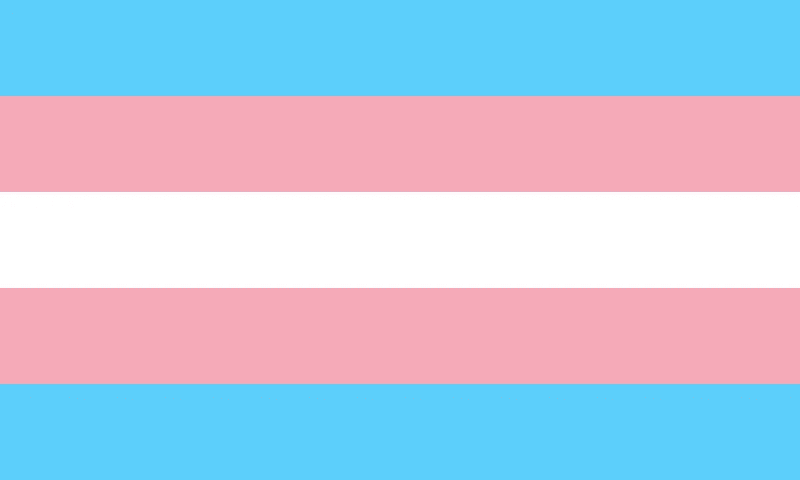 Commonly used trans flag
Commonly used trans flag
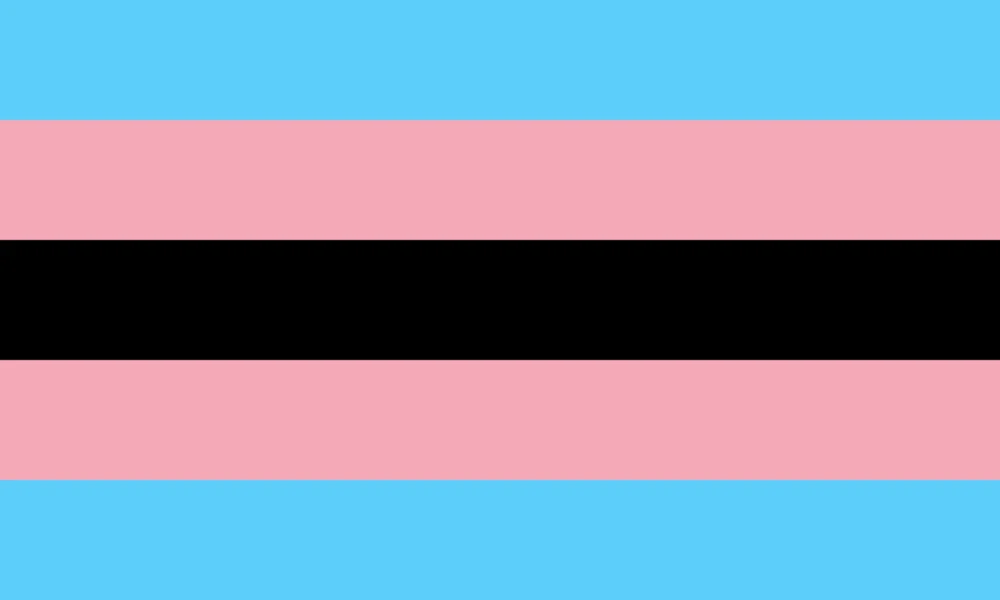 A black/POC trans flag
A black/POC trans flag
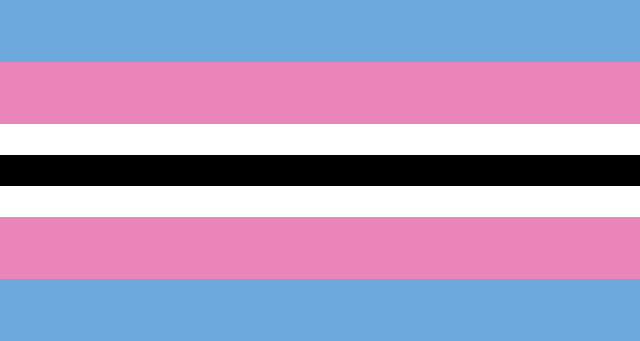 Alternated black/POC trans flag
Alternated black/POC trans flag
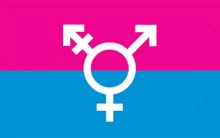 Another alternate version of the trans flag
Another alternate version of the trans flag
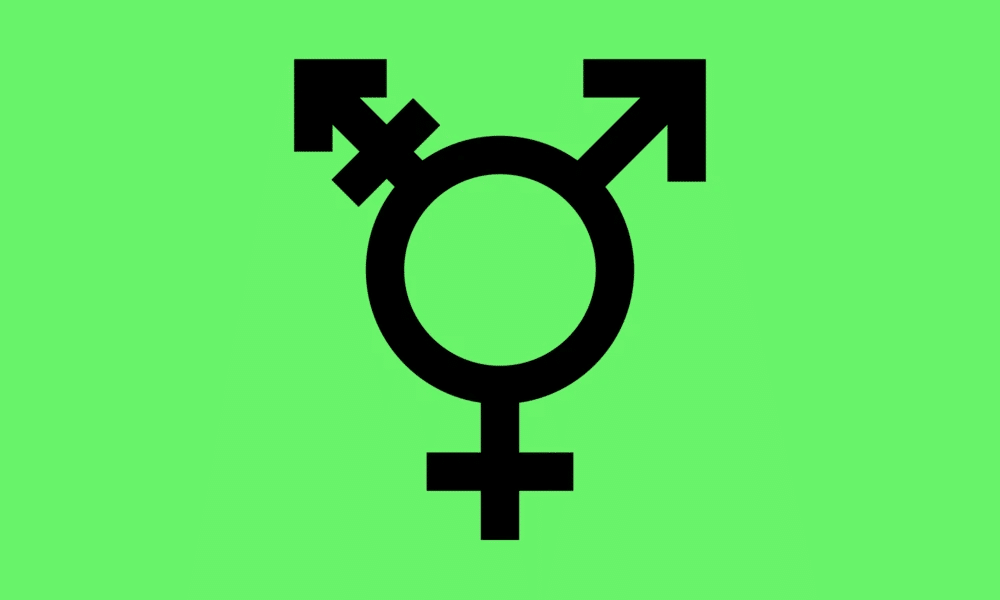 Israeli trans and genderqueer flag
Israeli trans and genderqueer flag
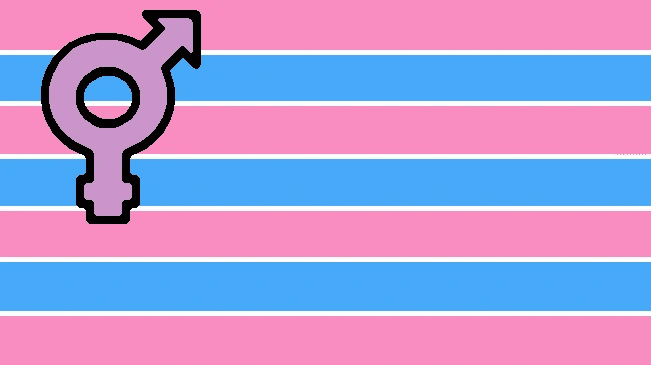 An alternate version of the trans flag
An alternate version of the trans flag
 Another alternate version is available online
Another alternate version is available online
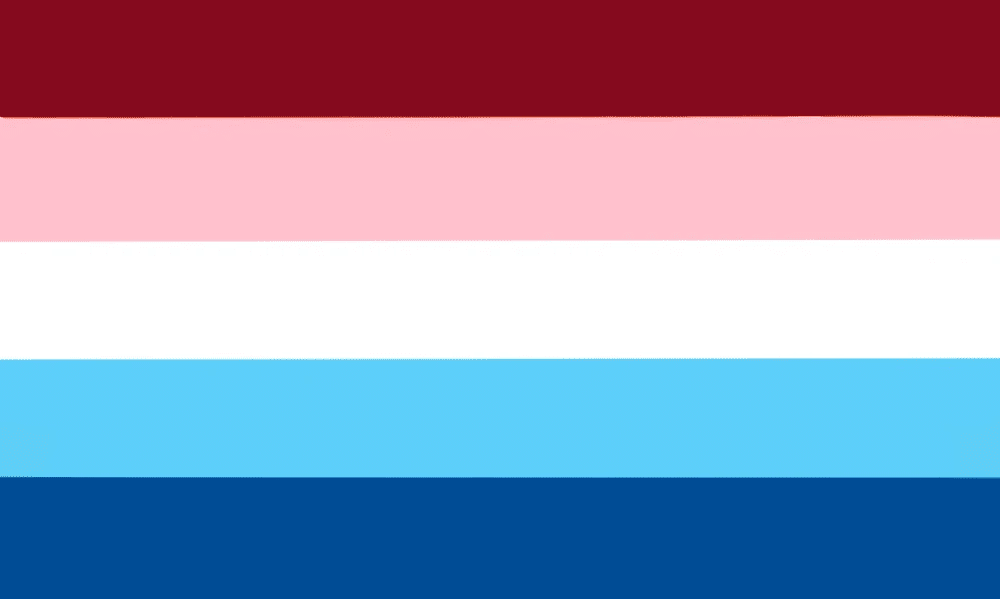 An alternate version of the transgender flag
An alternate version of the transgender flag


